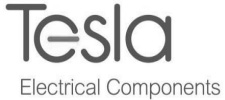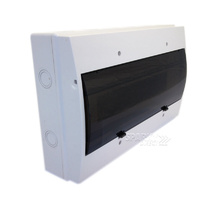Tesla ADM100TC | 3 Phase 100Amp Kilowatt Hour Meter Din Rail | Digital
This Kilowatt Hour Meter is used for private metering as it is not NMI-approved (billing applications)
The Tesla ADM100TC is a 3-phase kilowatt-hour meter designed for accurate energy tracking in high-load applications. Supporting up to 100A and operating on 230V/400V AC, this meter is ideal for commercial and industrial installations. It features DIN rail mounting for easy integration into electrical panels and has a precision class of 2 for reliable readings.
With an operational voltage range of 70-130%Ub and an internal power consumption of ≤2W/10VA, the ADM100TC ensures efficient energy measurement while minimizing power loss. It is built to withstand 2kV AC for one minute and operates within a frequency range of 50-60Hz ±10%, making it a durable and stable choice for energy monitoring.
Key Features:
- 3-phase kWh meter designed for measuring energy consumption in 230V/400V AC circuits.
- 20(100)A → Base: 20A, Max: 100A per Phase
- DIN rail mounting allows for quick and secure installation in electrical panels.
- Precision class 2 ensures accurate and consistent energy readings.
- Wide voltage range operates from 70% to 130% of nominal voltage.
- Overvoltage protection withstands 2kV AC for one minute for enhanced safety.
ADM100TC FAQ
Q: What voltage range does this meter support?
A: It operates on 230V/400V AC with an operational range of 70-130%Ub.
Q: Can this meter be installed on a DIN rail?
A: Yes, it is designed for quick and secure DIN rail mounting.
Q: What is the maximum current this meter can handle?
A: The ADM100TC supports up to 100A across three phases.
Q: What does Rated Current (A) 1.5(6)A/CT, 3(6)A/CT, 5(30)A, 10(60)A, 15(90)A, 20(100)A, mean?
A: Explanation of Each Format
1. 5A/CT
- CT stands for Current Transformer.
- This meter is designed to work with external current transformers and expects a 5 Amp secondary input from the CT.
- Commonly used in high-current installations (e.g. 200A, 400A) where it’s not practical to run full load current directly through the meter.
2. x(y)A Format
Examples: 5(30)A, 15(90)A, 20(100)A
This format shows both the base and maximum current ratings:
- x = base (nominal) current – the expected continuous load
- y = maximum current – the peak load the meter can safely handle
Examples:
- 5(30)A → Base: 5A, Max: 30A
- 10(60)A → Base: 10A, Max: 60A
- 15(90)A → Base: 15A, Max: 90A
- 20(100)A → Base: 20A, Max: 100A
Why So Many Options?
These options represent different variants of the ADM100TC meter, tailored to suit a range of installation needs:
- 5A/CT model – For high-current loads using external CTs
- Direct-connect models – For loads up to 15A, 30A, 90A, or 100A with no CTs required
What You Should Choose?
- If you’re metering a sub-board or circuit under 100A, go with a direct-connect model like 20(100)A
- If you’re metering a large service (e.g. 200A or more), use the 5A/CT model with CTs rated appropriately for the expected load.





















![]() YOUR ATTENTION PLEASE: Shipping is not available to for this product. Only order this product is you intend to pick it up locally. We will not ship this product to you if you order this. If you wish to cancel this order after ordering it you will be charged a 3.0% Refund Fee
YOUR ATTENTION PLEASE: Shipping is not available to for this product. Only order this product is you intend to pick it up locally. We will not ship this product to you if you order this. If you wish to cancel this order after ordering it you will be charged a 3.0% Refund Fee![]()
![]()















